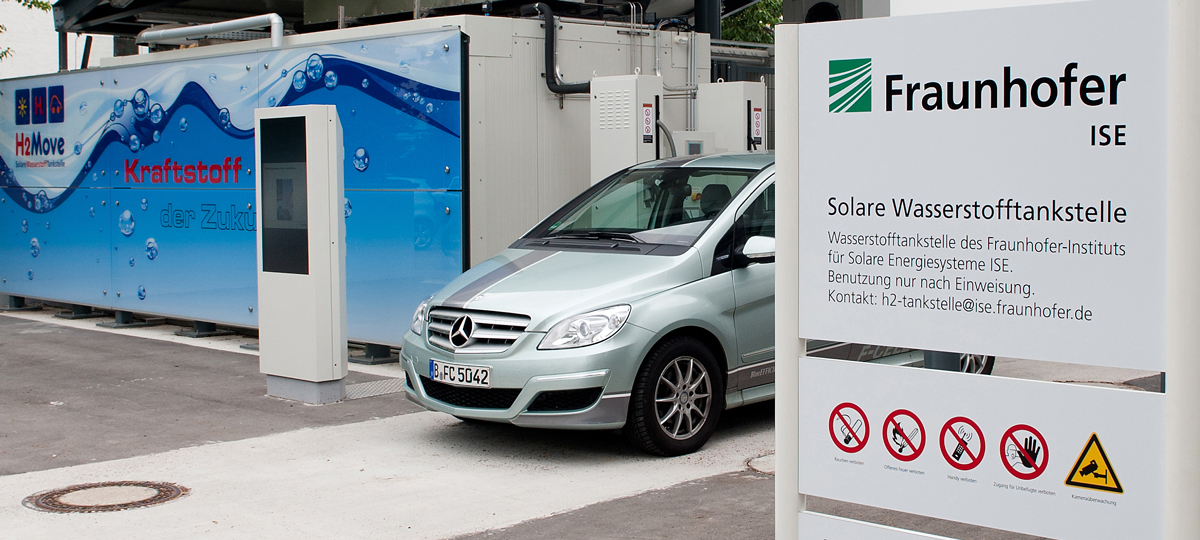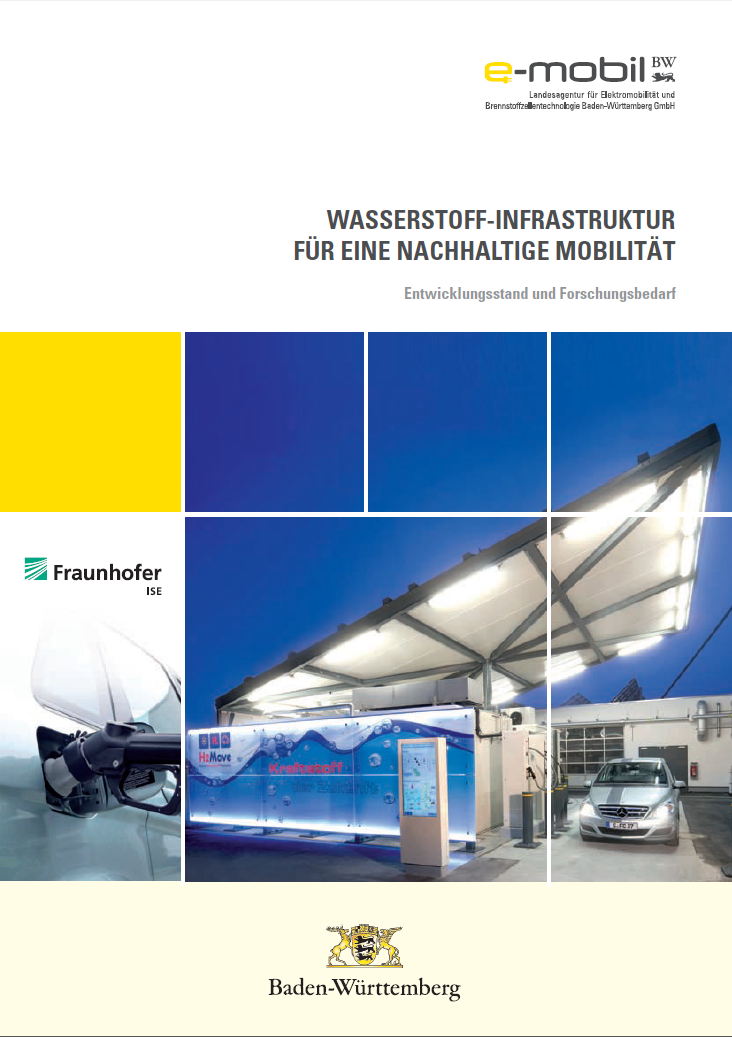| Duration: | June 2012 – December 2012 |
| Contracting Authority/ Sponsors: | Ministry of the Environment, Climate Protection and the Energy Sector, Baden-Württemberg |
Study: Hydrogen Infrastructure as Basis of Sustainable Mobility in Baden-Württemberg, Germany – Status Quo and Need for Action
Hydrogen Infrastructure for Sustainable Mobility


The German mobility sector is almost exclusively dependent on conventional drive technology. By contrast, hydrogen as a fuel in fuel cell vehicles excellently complements battery-powered drive units and is thus essential to reduce emissions of greenhouse gases in the transport sector. Acknowledging this situation, the Ministry of the Environment in the State of Baden-Württemberg commissioned Fraunhofer ISE with a study which considers the status quo and the need for action concerning mobility-relevant hydrogen infrastructure, develops a road map for H2 infrastructure up to 2030 and formulates recommendations for action based on these insights. The most important results of the “Hydrogen Infrastructure” study are presented below.
Due to diverse activities such as the ”Clean Energy Partnership“ (CEP) and ”H2Mobility“, Germany is establishing itself as the internationally leading market for hydrogen-based mobility. For example, in October 2013 the industry reaffirmed its intention to increase the number of public filling stations from 15 today to 100 in 2017 and 400 in 2023.
To establish a hydrogen infrastructure in the State of Baden-Württemberg, Germany, the market penetration of hydrogen in the transport sector was quantified, and the demand for hydrogen, the number of filling stations required and their capacity were derived for the period up to 2030. In Baden-Württemberg, up to 330 filling stations and a hydrogen turnover of 50,000 tonnes per year are expected for 2030.
The issues to be faced in building up a hydrogen infrastructure include the cost, reliability, approval / testing and authorisation of the filling stations, the (further) development of components and the current lack of demand for hydrogen. On this basis, four main tenets were formulated:
- Hydrogen as a fuel can make an important contribution to reaching the climate protection goals and supporting the expansion of renewable energy usage.
- To reduce the investment risk and prepare the market,
public funding will continue to be needed. - Standardisation will facilitate the establishment of H2 filling station infrastructure.
- Further activities by the actors involved are needed to achieve commercially mature infrastructure.